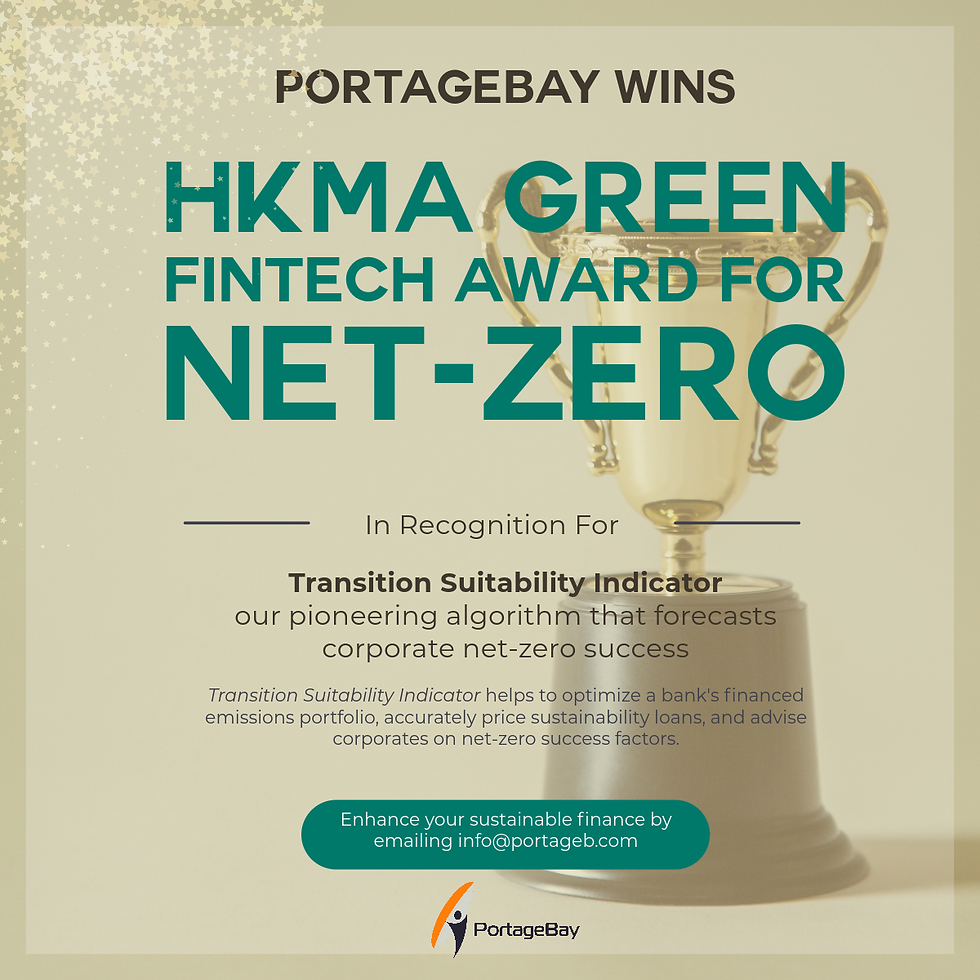The Convergence of ESG Reporting Standards
- PortageBay
- Apr 23, 2022
- 3 min read
Updated: Nov 26, 2023
The ESG disclosure landscape has become increasingly complex. This has led to confusion and inefficiencies because commonly-used metrics, such as carbon emissions, are often reported differently across various ESG frameworks. What’s the ground truth and is there a common standard that can be relied upon?
ESG disclosure reporting took a big leap forward recently at the United Nations Climate Change Conference (COP26). The IFRS Foundation, which sets global financial reporting standards, announced it will merge with the Sustainability Accounting Standards Board (SASB), a holistic investor-focused ESG framework. The result is the formation of the International Sustainability Standards Board (ISSB).
The IFRS/ISSB is setting a comprehensive global ESG disclosure standard to meet investors’ information needs. In addition, the ISSB is also converging existing investor-focused ESG frameworks, such as TCFD, CDP and SASB, into one integrated reporting standard. This will provide investors and capital markets with disclosure standards that are comparable and consistent.
Today’s ESG Disclosure Landscape is Complex
Today’s ESG disclosure landscape is peppered with acronyms with over a dozen different standards as shown in Figure 1. The landscape is made exponentially complex by permutations of intended purpose (general ESG vs. climate only), audience (stakeholders vs. financial participants), industry-specific disclosure, and country-reporting variations.
These variations lead to inconsistencies because one ESG concept may be interpreted differently across frameworks. The analogy is that a word like “apple” can also be called “crab apple”, “pomme”, “edible fruit”, “Malus pumila”, or “iPhone.” They are all correct, depending on the audience and context.
Each ESG disclosure framework serves its intended purpose. But, the diversity is untenable and a common standard is desperately needed.
Figure 1: A comparison of common ESG reporting standards (other standards include UN SDGs, TNFD, and GRESB)
The Convergence of ESG Reporting Standards
Investors and capital markets need evidence-based, consistent and comparable ESG information. The difficulty is that raw ESG data need to conform to a common taxonomy across the universe of companies, adjusted to globally accepted units, and normalized for industry-specific needs. Then, investment materiality needs to be considered because carbon emissions may be important for some industries but not to others.
The ISSB was created from the merger of SASB, an investor-focused sustainability framework, and the IFRS, the internationally-recognized financial reporting standard. This pedigree immediately makes ISSB stand out as the front-runner to unify sustainability disclosures into a global standard. As well, there are 4 factors that distinguish the ISSB’s standards:
1. Robust and transparent The ISSB’s framework is holistic across 26 topics of E/S/G, unlike others that take a specialized view of E/S/G. The ISSB specifies a hierarchy of disclosure from high-level measurements down to granular metrics. This makes the disclosure evidence-based and easy to understand.
2. Open-source approach The ISSB takes a colloborative approach to incorporate other frameworks under one umbrella. As shown in Figure 2, there are active workstreams to unify TCFD, CDP, SASB and IRF. The result is one consistent standard that investors can rely on.

Figure 2: ISSB is creating one consistent standard (Source: SASB)
3. Credibility The ISSB framework is buttressed by open-consultation with investors, financial institutions, industry specialists and regulators. This has strengthened the ISSB as a globally-accepted framework. Equally important, the ISSB does not collect or sell ESG data unlike other organizations nor does it sell research views. ISSB is a neutral standards setting body.
4. Investment materiality by industry A distinguishing feature of ISSB is its investment materiality matrix. Through open-consultations with stakeholders, the matrix lists the most important ESG topics for 77 different industries. This makes the framework incredibly practical because it focuses investors on issues that matter. It also reduces the effort required by corporates to collect the information.

Figure 3: The SASB materiality matrix (Source: SASB)
Implications and What’s Next
That the IFRS/ISSB is bringing stakeholders together to form a consistent and comparable disclosure framework is welcome news. This will lead to improved corporate ESG disclosure, enabling investors and capital markets to transparently assess a corporate’s ESG merits.
The ISSB standards will likely be introduced in late 2022. In the meantime, investors can focus on understanding the two foundational frameworks of ISSB: SASB for general evaluation and TCFD for climate-specific evaluation.
Looking ahead, a key challenge will continue to be reducing the complexity to analyze ESG. It is time intensive to analyze a universe of companies across hundreds of ESG factors. It is even harder to assess how ESG risks are investment risks. The latter requires a new breed of investment analyst who integrates ESG tightly into existing research processes.




Comments